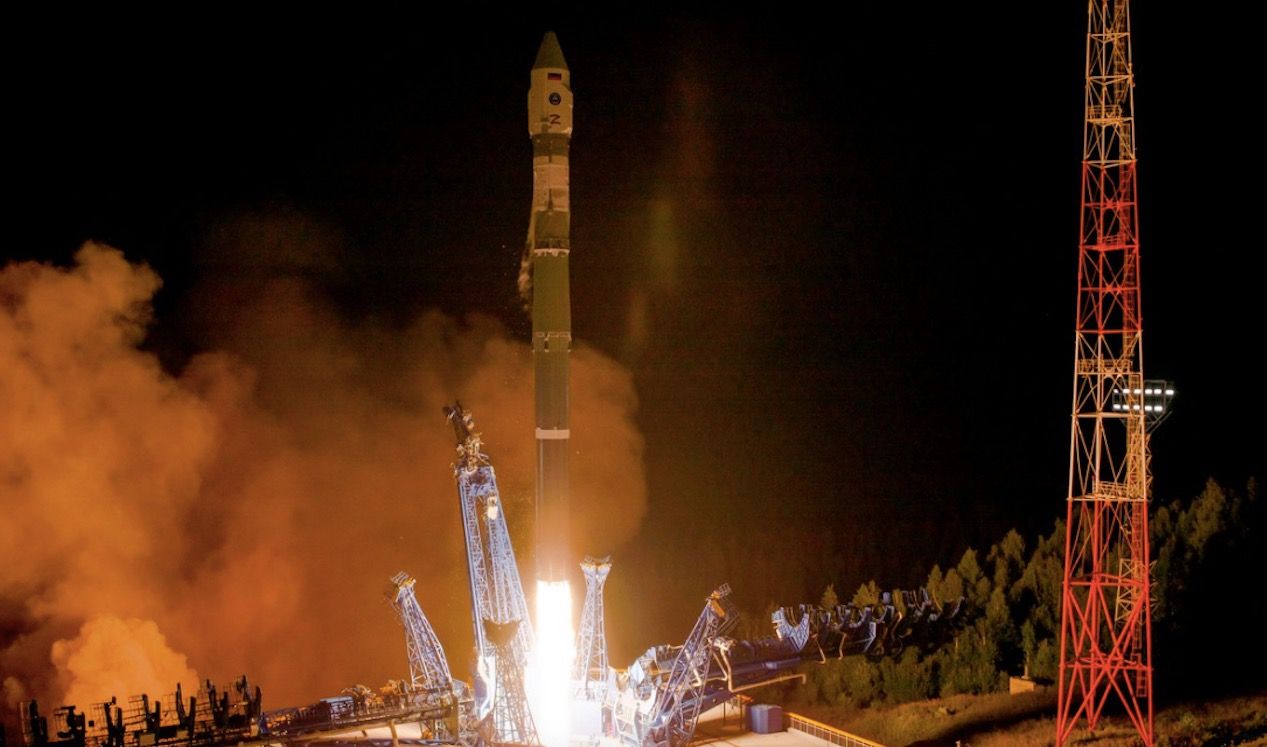Pentagon space chief condemns 'irresponsible' launch of Russian inspector satellite

The Pentagon is speaking out against Russia's launch of a spy satellite believed to be shadowing one of its American counterparts closely in the same orbit.
The Russian satellite, known as Kosmos 2558, launched on Aug. 1 and appears to have been placed in nearly the same orbit as a classified American reconnaissance satellite that launched on Feb. 2. According to Netherlands-based satellite tracker Marco Langbroek, as of Aug. 2 Kosmos 2558 is mirroring the American satellite's orbit with a difference of just 0.04 degrees and a separation of 37 miles (60 kilometers).
"That's really irresponsible behavior," said Gen. James H. Dickinson, Commander of U.S. Space Command (SPACECOM) in a report released by NBC Nightly News with Lester Holt. "We see that it's in a similar orbit to one of our high-value assets for the U.S. government. And so we'll continue like we always do, to continue to update that and track that," Dickinson continued.
Related: Did Russia just launch a spacecraft to stalk a US spy satellite?
An NBC News camera crew was allowed inside the U.S. Space
Command Joint Operations Center at Peterson Space Force Base, Colorado. According to the NBC Nightly News with Lester Holt report, this is the first time that cameras have been allowed inside the facility. NSDC's mission is to gather and integrate data from a wide variety of satellites and ground-based monitoring stations, and then share that information throughout the U.S. military and intelligence community.
"We have some really good space capabilities today that will tell us almost immediately if there's been a launch," an unnamed Space Force officer says in NBC Nightly News with Lester Holt's report.
Kosmos 2558 is rumored to be a so-called "inspector satellite" capable of maneuvering close to other spacecraft, relatively speaking. Other Russian satellites have been observed in the past displaying the same behaviors.
Breaking space news, the latest updates on rocket launches, skywatching events and more!
The mission and capabilities of the American satellite being "stalked" by Kosmos 2558 are not known, but it is believed to be capable of collecting imagery intelligence.
This isn't the first time that the United States has condemned Russia's irresponsible activities in orbit. In 2021, Russia fired a missile to destroy one of its own defunct satellites, leaving behind thousands of pieces of trackable orbital debris, some of which prompted the International Space Station to maneuver out of harm's way.
"Dangerous and irresponsible behavior jeopardizes the long-term sustainability of outer space and clearly demonstrates that Russia's claims of opposing the weapons and weaponization of space are disingenuous and hypocritical," U.S. Department of State spokesperson Ned Price said at the time.
Editor's note: This story was updated for clarity at 10:15 a.m. EDT on Thursday (Aug. 11) to change "NBC News" to "NBC Nightly News with Lester Holt" and again at 1:30 p.m. EDT to change "Schriever Air Force Base" to "Schriever Space Force Base." and "Joint Interagency Combined Space Operations Center" to "National Space Defense Center."
Follow Brett on Twitter at @bretttingley. Follow us on Twitter @Spacedotcom or on Facebook.

Brett is curious about emerging aerospace technologies, alternative launch concepts, military space developments and uncrewed aircraft systems. Brett's work has appeared on Scientific American, The War Zone, Popular Science, the History Channel, Science Discovery and more. Brett has English degrees from Clemson University and the University of North Carolina at Charlotte. In his free time, Brett enjoys skywatching throughout the dark skies of the Appalachian mountains.
